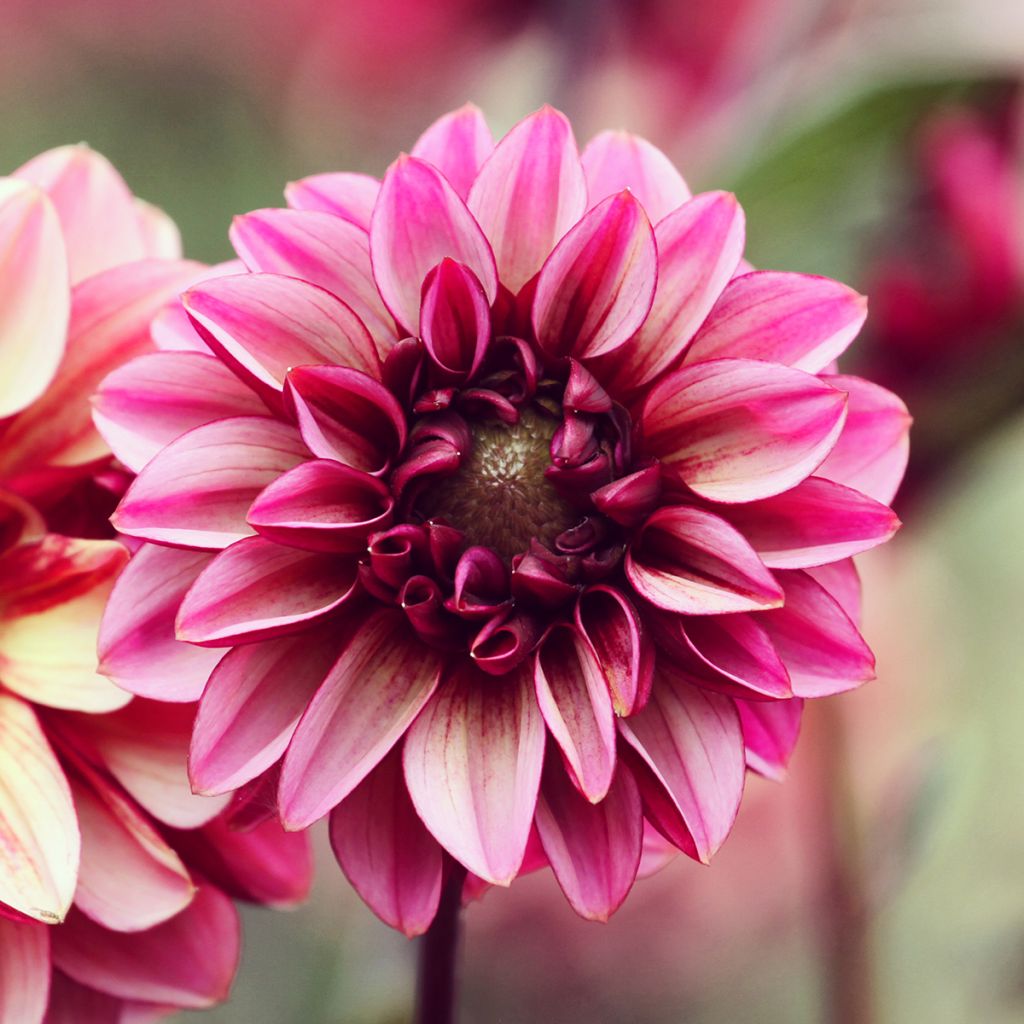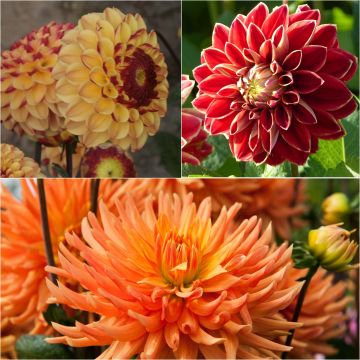

Dahlia Seniors Hope


Dahlia Seniors Hope


Dahlia Seniors Hope


Dahlia Seniors Hope


Dahlia Seniors Hope
Dahlia Seniors Hope
Dahlia Seniors Hope
Dahlia
All the dahlias I ordered have taken well, except for this one that I had really fallen in love with ❤️. Started in a pot, it never showed any sign of life. All the others are beautiful.
Anna, 22/06/2025
Special offer!
Receive a €20 voucher for any order over €90 (excluding delivery costs, credit notes, and plastic-free options)!
1- Add your favorite plants to your cart.
2- Once you have reached €90, confirm your order (you can even choose the delivery date!).
3- As soon as your order is shipped, you will receive an email containing your voucher code, valid for 3 months (90 days).
Your voucher is unique and can only be used once, for any order with a minimum value of €20, excluding delivery costs.
Can be combined with other current offers, non-divisible and non-refundable.
Home or relay delivery (depending on size and destination)
Schedule delivery date,
and select date in basket
This plant carries a 6 months recovery warranty
More information
We guarantee the quality of our plants for a full growing cycle, and will replace at our expense any plant that fails to recover under normal climatic and planting conditions.
Would this plant suit my garden?
Set up your Plantfit profile →
Description
Dahlia Seniors Hope, like all the varieties of the Seniors series, is a new decorative dahlia of rather modest size, very flowering, with a truly unique color. It bears double flowers in balls, fully striped and variegated with old rose, garnet, purple and violet with a touch of golden cream, carried by almost black stems. Blooming late in the season, this next-generation Dahlia is also a strong and versatile plant that does not require staking. It has its place in a flower garden, is suitable for pot culture, and its long-lasting flowers can be used to create all kinds of bouquets. For us, it's a real favourite!
Dahlias belong to the aster family and are originally from the high plateaus of Mexico. At present, the approximately 25,000 horticultural varieties obtained by man have invaded, to our great pleasure, gardens all over the world.
The 'Seniors Hope' variety is a semi-dwarf Dahlia, it will not exceed 70 cm (28in) in all directions. It is also classified as a decorative Dahlia, which is a horticultural category defined by the shape of the flower. In this group, the coloured ligules of the head are arranged regularly in a spiral, they can be bent towards the stem or fringed, for example. The 'flowers' or heads of 'Seniors Hope', widely offered to the eye, almost globose, are about 12 cm (5in) in diameter. The ligules or 'petals' are oval in shape, in shells, which allows them to reveal a dark red garnet reverse contrasting with their lighter colour on the top. The overall composition is a baroque harmony combining different shades of pink, cream, and red to purple. The golden heart of the flower only appears late, just before fading. The flowering takes place from July to October. The habit is bushy and dense. The very branched stems are hollow and the leaves are opposite, pinnatisect, meaning they divide into 3 or 5 very toothed lobes. The shiny leaves are dark green, while the floral stems are almost black.
To promote flowering, take care to remove faded flowers, or better yet, regularly make large colourful bouquets by combining it with other varieties. 'Seniors Hope', with its strong personality, will form remarkably colourful spots in flower beds. Plant it, for example, with pink Echinaceas that bloom at the same time, or with Asters. Japanese anemones are good companions for the late season, as are ornamental grasses (compact Miscanthus, Pennisetum, Stipa, Muhlenbergia capillaris, Eragrostis spectabilis). This modest-sized variety is well suited for pot culture, to easily adorn the patio or balcony.
As a star plant in curative gardens, Dahlias are undoubtedly beautiful flowers. They are perfect in flower beds but can also enhance the vegetable garden. In Mexico, this tuberous plant was first cultivated as a root vegetable for consumption. Its poor taste qualities quickly assigned it the status of an ornamental plant. Since then, the interest in their beautiful exuberance has never waned.
Dahlia Seniors Hope in pictures




Plant habit
Flowering
Foliage
Botanical data
Dahlia
Seniors Hope
Asteraceae
Dahlia
Cultivar or hybrid
Other Ornamental Dahlias
View all →Planting and care
The 'Seniors Hope' Decorative Dahlia is easy to grow in all regions. For abundant flowering, it is good to follow a few simple rules. Plant the tubers in full sun as soon as the last frost is over. Rich, damp, and well-drained soil is perfect. However, waterlogging would promote tuber rot. Feel free to amend the soil with compost and sand if necessary. Work the soil deeply and enrich it, for example, with bonemeal. Place your tuber and crumble the soil well to fill without air pockets. Your dahlia should be covered with about 6 cm (2in) of soil. At the end of planting, water generously once and then regularly repeat this watering during the first 6 weeks to help with rooting.
Dahlias are sensitive to cold, so they need to be overwintered. In November, the first frost blackens the foliage, which is the time to dig them up. Carefully remove the tubers, removing as much soil as possible. Let the foliage dry so that the tubers can replenish their reserves. Then cut the stems to 10 cm (4in). Spread your bulbs in a box on newspaper. Store them in a frost-free, dry, cool, and dark place, such as a frost-free garage or attic, for example. In warmer regions, or areas close to the coast, where there are few frosty days per year, it is possible to leave them in place. In this case, simply cover the ground with a carpet of leaves or straw for protection.
Planting period
Intended location
Care
Planting & care advice
-
, onOrder confirmed
Reply from on Promesse de fleurs
Similar products
Haven't found what you were looking for?
Hardiness is the lowest winter temperature a plant can endure without suffering serious damage or even dying. However, hardiness is affected by location (a sheltered area, such as a patio), protection (winter cover) and soil type (hardiness is improved by well-drained soil).

Photo Sharing Terms & Conditions
In order to encourage gardeners to interact and share their experiences, Promesse de fleurs offers various media enabling content to be uploaded onto its Site - in particular via the ‘Photo sharing’ module.
The User agrees to refrain from:
- Posting any content that is illegal, prejudicial, insulting, racist, inciteful to hatred, revisionist, contrary to public decency, that infringes on privacy or on the privacy rights of third parties, in particular the publicity rights of persons and goods, intellectual property rights, or the right to privacy.
- Submitting content on behalf of a third party;
- Impersonate the identity of a third party and/or publish any personal information about a third party;
In general, the User undertakes to refrain from any unethical behaviour.
All Content (in particular text, comments, files, images, photos, videos, creative works, etc.), which may be subject to property or intellectual property rights, image or other private rights, shall remain the property of the User, subject to the limited rights granted by the terms of the licence granted by Promesse de fleurs as stated below. Users are at liberty to publish or not to publish such Content on the Site, notably via the ‘Photo Sharing’ facility, and accept that this Content shall be made public and freely accessible, notably on the Internet.
Users further acknowledge, undertake to have ,and guarantee that they hold all necessary rights and permissions to publish such material on the Site, in particular with regard to the legislation in force pertaining to any privacy, property, intellectual property, image, or contractual rights, or rights of any other nature. By publishing such Content on the Site, Users acknowledge accepting full liability as publishers of the Content within the meaning of the law, and grant Promesse de fleurs, free of charge, an inclusive, worldwide licence for the said Content for the entire duration of its publication, including all reproduction, representation, up/downloading, displaying, performing, transmission, and storage rights.
Users also grant permission for their name to be linked to the Content and accept that this link may not always be made available.
By engaging in posting material, Users consent to their Content becoming automatically accessible on the Internet, in particular on other sites and/or blogs and/or web pages of the Promesse de fleurs site, including in particular social pages and the Promesse de fleurs catalogue.
Users may secure the removal of entrusted content free of charge by issuing a simple request via our contact form.
The flowering period indicated on our website applies to countries and regions located in USDA zone 8 (France, the United Kingdom, Ireland, the Netherlands, etc.)
It will vary according to where you live:
- In zones 9 to 10 (Italy, Spain, Greece, etc.), flowering will occur about 2 to 4 weeks earlier.
- In zones 6 to 7 (Germany, Poland, Slovenia, and lower mountainous regions), flowering will be delayed by 2 to 3 weeks.
- In zone 5 (Central Europe, Scandinavia), blooming will be delayed by 3 to 5 weeks.
In temperate climates, pruning of spring-flowering shrubs (forsythia, spireas, etc.) should be done just after flowering.
Pruning of summer-flowering shrubs (Indian Lilac, Perovskia, etc.) can be done in winter or spring.
In cold regions as well as with frost-sensitive plants, avoid pruning too early when severe frosts may still occur.
The planting period indicated on our website applies to countries and regions located in USDA zone 8 (France, United Kingdom, Ireland, Netherlands).
It will vary according to where you live:
- In Mediterranean zones (Marseille, Madrid, Milan, etc.), autumn and winter are the best planting periods.
- In continental zones (Strasbourg, Munich, Vienna, etc.), delay planting by 2 to 3 weeks in spring and bring it forward by 2 to 4 weeks in autumn.
- In mountainous regions (the Alps, Pyrenees, Carpathians, etc.), it is best to plant in late spring (May-June) or late summer (August-September).
The harvesting period indicated on our website applies to countries and regions in USDA zone 8 (France, England, Ireland, the Netherlands).
In colder areas (Scandinavia, Poland, Austria...) fruit and vegetable harvests are likely to be delayed by 3-4 weeks.
In warmer areas (Italy, Spain, Greece, etc.), harvesting will probably take place earlier, depending on weather conditions.
The sowing periods indicated on our website apply to countries and regions within USDA Zone 8 (France, UK, Ireland, Netherlands).
In colder areas (Scandinavia, Poland, Austria...), delay any outdoor sowing by 3-4 weeks, or sow under glass.
In warmer climes (Italy, Spain, Greece, etc.), bring outdoor sowing forward by a few weeks.
























































